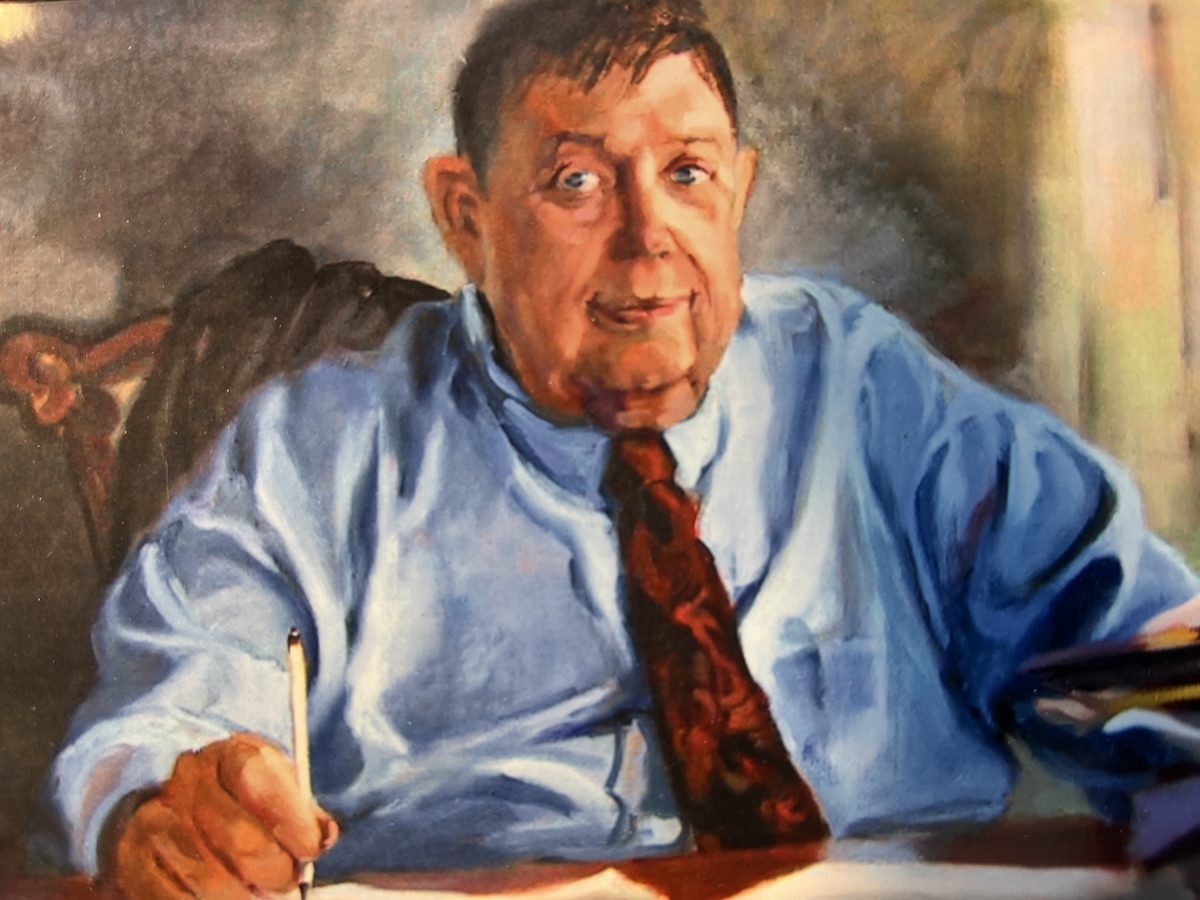By Scott Graber
Sometimes — you may have sensed this — when I sit down to write I have nothing much to say. This isn’t to say I haven’t tried.
I may have looked through the editorial pages of The Wall Street Journal; or through my father’s “Pathology” textbook hoping to stumble on something that would spark my imagination. Sometimes I make phone calls to friends desperately seeking mendacity or misogyny or an out-break of Legionnaires Disease.
Earlier this week I came upon an essay titled “Now You See Me” by Jackson Arn in the New Yorker Magazine. Arn’s piece is actually a review of a book titled “Family Romance; John Singer Sargent and the Wertheimers” by Jean Strouse.
The book and Arn’s review concern itself with a single portrait — that of Asher Wertheimer — done by John Singer Sargent in 1898. Most of you know that John Singer Sargent did hundreds of portraits during America’s gilded age depicting “captains of industry” and their satin-wearing, hot house nurtured wives.
My wife, Susan, was also a portrait painter — some of her work may be seen in the Beaufort County Courthouse. So I know something about the angst that goes into rendering a face, and the effort the artist makes to project the sitter’s personality.
“Asher Wertheimer” emerges from a black background with a black dog, mouth open, eyes looking straight into those of the viewer. Sergeant also gives Wertheimer raised eyebrows, a cigar and a red-lipped half-smile that has been called “cunning.”
Why, you may ask, would anyone want to be rendered as “cunning?”
According to Jean Strouse, Wertheimer made his fortune selling art to wealthy patrons in an age when collecting precious things was absolutely, positively essential. And because the number of authentic “Old Masters” was finite, art dealers had a reputation for upgrading copies of Rubens and Rembrandt to actual, authentic, done-by-the-master originals.
“His coat and cigar and gold watch chain are, make no mistake, as much of a costume as anything Ellen Terry (an actress of that period) ever wore, and when I see the glint in his eyes I suspect he knows it. As for whether he is going as “stereotypical avaricious Jew” or “completely uncontroversial modern businessman” by this point in his career, surely, he has figured out they are one in the same. …”
In other words — according to Arn — Asher Wertheimer accepts that this canvas is mostly self-promotion and he is willing to project “cunning;” or any prop that will help him sell his Old Masters, fake or otherwise.
I cannot disagree with the idea of self-promotion that Mr Arn suggests; but I can’t remember any of Susan’s clients saying, “You know what … do you think you could paint me as “cunning” mixed with a little bit of ‘avaricious Jew’ on the side?”
All of which brings me to Susan’s portrait of Judge Thomas Kemmerlin which now hangs in the large (ceremonial) courtroom at the Beaufort County Courthouse.
Susan did portraits of a dozen judges — most wanting to be seen in their robes with the Great Seal of South Carolina looming in the background. Kemmerlin wanted none of these props. He is seen sitting at an ordinary table; looking slightly surprised; wearing a blue oxford cloth shirt.

His facial expression (slight surprise) is the one I saw when I interrupted him in his closet-sized chambers. And I often interrupted him — usually on a Friday afternoon — wanting to talk about particular statute, or about women entering the profession, or the strangeness of Charleston lawyers, or about the shenanigans of the State House crowd.
But what I really wanted were his stories — sometimes lengthy and outrageous — about practicing law across the State in the 1950s. I wanted stories about colorful, small town mandarins and what was going on when South Carolina occupied a metaphysical space somewhere between Congo and Cornwall.
Susan did a good likeness of Tommy but I doubt that if many current lawyers know this man’s name. In fact, I doubt if many of the lawyers, jurors or visiting judges know the names of the other men (and two women) who silently stare into this huge room.
But once in a while someone like Jean Strouse will come along and resurrect an Asher Wertheimer from his obscurity. A desperate writer will take a smile, a cigar, a dog, and mix those images with what little documentary evidence that remains.
I would like to believe that might happen to Judge Thomas Kemmerlin.
Scott Graber is a lawyer, novelist, veteran columnist and longtime resident of Port Royal. He can be reached at cscottgraber@gmail.com.







